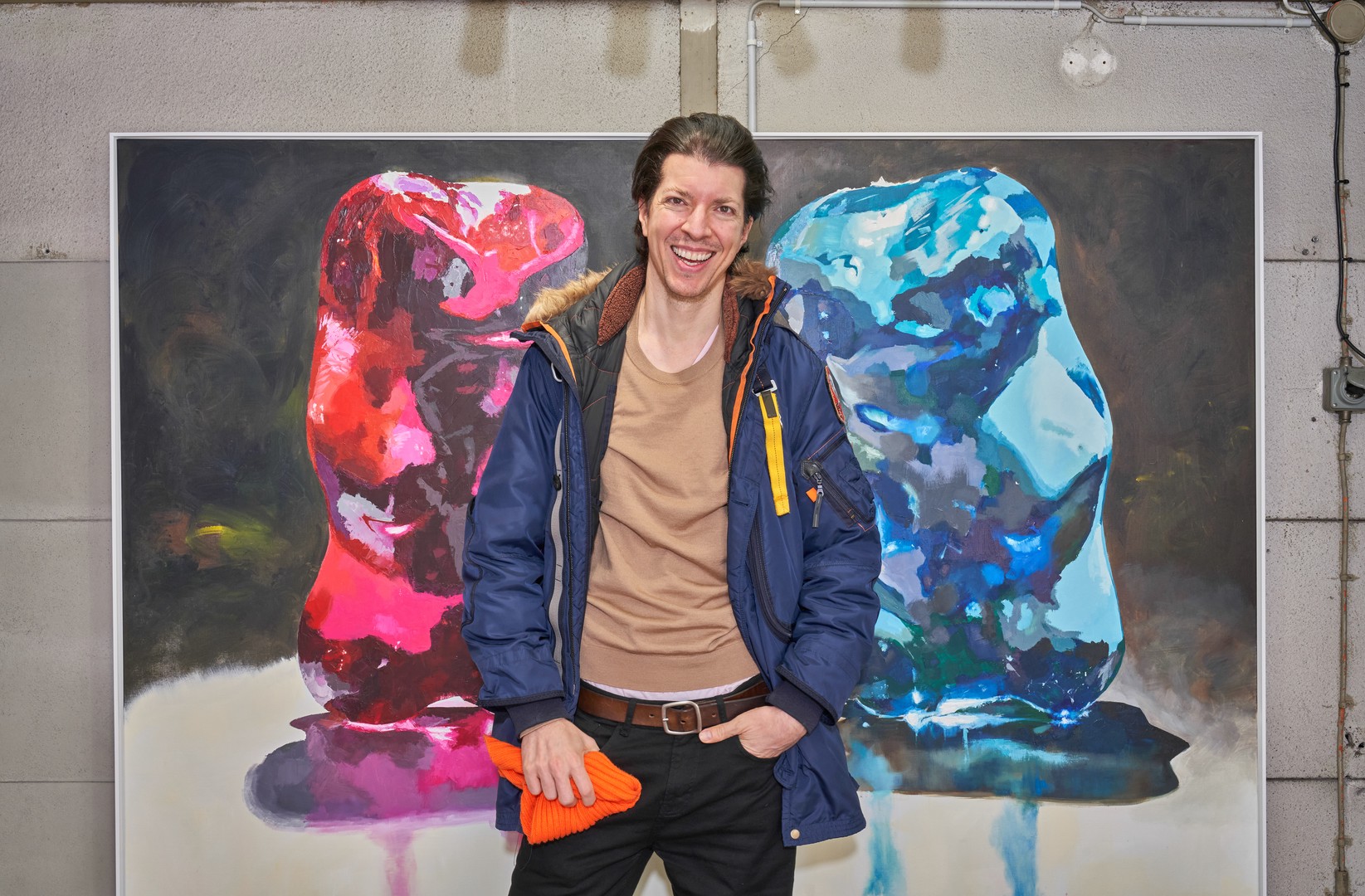Drawing since early childhood, I went to the School of art and design Basel at the age of ten to find out: Were my drawings good enough to start a career in art?
I asked the first teacher in the corridors for some attention and showed her some works. After a few sheets, I got an unconditional yes. Unfortunately, I was too young to enter. The years went by, and in addition to pen and paper, the computer conquered my youthful mind.
It was only more than 30 years later and after 20 years of owning an IT company that I followed this inner voice. I discovered colour and graduated from the aforementioned school.
The childhood passion for drawing as well as passion for structure and logic form the foundation of my current work today.
Bio
- 2021-2023 - School of art and design Basel
- 2001-2021 - IT company owner (Notebox AG)
- 1980 - Born in Basel
Exhibitions
- 2024 - Artist in residence, Galerie Brigitta Leupin, Basel
- 2023 - Selected works, Parzelle403, Basel
- 2023 - Pink, Villa Renata, Basel
- 2022 - Bis morgen, Galerie Durchgang, Basel
- Mahtola Wittmer, Aramis Navarro, Magdalena Baranya, Alexandra Meyer, Tiziano Autera, VARLIN, Rida Ayed, Genevieve Leong, Piero Good, Ramon Hungerbühler, Otto Bruderer, Irene Zurkinden, Gregor Lanz
- 2022 - ART:NOW, Oslo Studios, Basel
- 2022 - Completely Happy, Oslo Studios, Basel
- Beat Presser, Felix Kindelán, Rida Ayed
- 2022 - ARTBOX.PROJECT VENEZIA 1.0, Biennale Venice (Display & online)
- 2022 - ARTBOX.PROJECT World 2.0, Zurich Mainstation & artsy.net
- 2021 - ARTBOX.PROJECT World 1.0, Zurich Mainstation & artsy.net
Acquisitions
- Now Werbeagentur AG
- Weibel Möbel AG
Dr. Nadja Borer about my art
In his works created since 2019, Basel-based artist Rida Ayed questions the relationship between illusion and “reality”, between perception and memory. In numerous works, familiar goods from the consumer world that we know from our childhood days are cited and, as it were, questioned. For the most part, Rida Ayed’s still lifes neither depict “real” objects nor do they make use of existing photographs. Either created using free software (Linux, Python, Blender) or by means of artistic interpretation of the object at hand, they have no less outstanding seductive power than images we know from advertising. The focus of his work is the question of the relationship between pictorial imagination and representation in the digital media art age. The images, completely detached from the speaker, illustrate the moment of doubt. This makes culturally shaped viewing regimes and the associated aesthetics visible. Media-mediated prior knowledge and “real” experiences of reality intertwine and play with images of the consumer world. In Rida Ayed’s works, naturalisms of cultural memory patterns are (digitally) reconfigured and subsequently give rise to different stagings of the world of consumer goods and the artificiality of memories. In the series of still lifes with confectionery, the moment of artificiality is added to by further levels of meaning, since we know “gummy bears” as artificial-tasting, tempting, industrially manufactured products. In Ayed’s paintings, however, these are in addition often without reference, completely artificial - in a double sense - created with the help of the artist’s imagination on the computer. This constant experimentation with computer programs to reconfigure the object again and again, be it in form or colour, is a key moment in Ayed’s artistic work. In this way, the artist succeeds in opening up intermediate spaces between the supposed reality and the imagination (our memories) and thus rethinking our perception itself, but also the relationship between man and artificiality.
Rida Ayed bases his conceptual media art on two further components as a basic structure, whereby further levels of meaning and dichotomies to artificiality appear. All image sizes as well as their respective grounds are constructed according to the principle of the Fibonacci sequence. The Fibonacci sequence, which dates back to the 13th century, illustrates an infinite sequence of natural numbers and thus depicts supposedly “natural” growth processes in nature. It is also closely related to the golden ratio, which gives the still lifes a “natural” balance and tranquillity in terms of the surface area and size of the works. In addition, the artist uses the colour Baker Miller Pink - a special pink developed in the 1960s to calm down recalcitrant prison inmates, as the colour has an effect on the hormonal system and helps to lower blood pressure - for the base areas of the still lifes. Serenely, without succumbing to the attention economy, the artist invites us to marvel at his supposedly cheerful and within reach sweets, while you almost seem to taste them in the air and your mouth waters. Rida Ayed’s art, however, does not stick to the surface, but constantly invites us into the spaces between imagination and supposed likeness, makes us reflect on our patterns of memory and is perhaps also to be understood as an invitation to daydream or even as an appeal to turn to one’s own “reality”.
Dr. Nadja Borer
March 2023, Villa Renata, Basel
Contact
